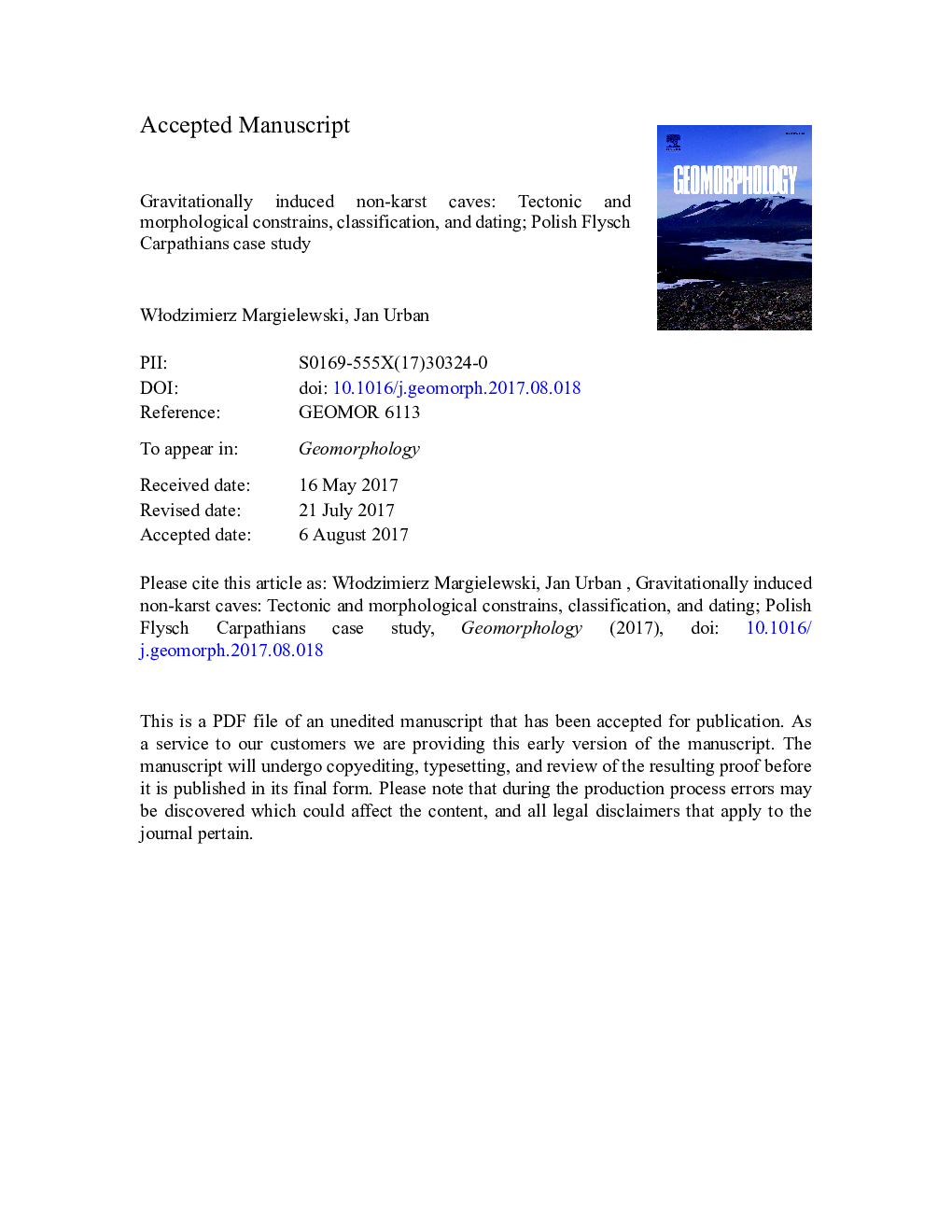| کد مقاله | کد نشریه | سال انتشار | مقاله انگلیسی | نسخه تمام متن |
|---|---|---|---|---|
| 5780816 | 1635354 | 2017 | 69 صفحه PDF | دانلود رایگان |
عنوان انگلیسی مقاله ISI
Gravitationally induced non-karst caves: Tectonic and morphological constrains, classification, and dating; Polish Flysch Carpathians case study
دانلود مقاله + سفارش ترجمه
دانلود مقاله ISI انگلیسی
رایگان برای ایرانیان
کلمات کلیدی
موضوعات مرتبط
مهندسی و علوم پایه
علوم زمین و سیارات
فرآیندهای سطح زمین
پیش نمایش صفحه اول مقاله

چکیده انگلیسی
Analysis of non-karst caves in the Flysch Carpathians confirms the connection between the tectonic evolution of this orogen and the initial phase of cave formation. The compressional-extensional regime during the tectonic stages of the evolution of the Carpathians is the foundation of subsequent gravitational stresses within the slopes, which brought about various deformations of rock massifs, producing diverse types of subsurface cavities - caves. Therefore, most caves that occur in the Carpathians, represent forms of the opening and widening of joints and stress zones originated much earlier. Classification based on the chronology and mechanisms of these caves is proposed. A chronological approach requires understanding the relationship of cave development to the stages of slope evolution and enables the construction of the morphogenetic classification, whereas consideration of the processes affecting the rock massif structure allows geomechanic classification. Using the morphogenetic criterion, three categories of caves can be distinguished: initial caves developed during slope deformations preceding the principal slope failures (landslides), subsequent caves formed during the main slope failure, and intermediate caves related to the main scarp formation. On the basis of the geomechanic criterion the following types of caves can be distinguished: dilational caves formed due to tensional fractures widening, dilatancy caves formed due to the fissure macrodilatancy, and boulder caves, which represent chaotic cavities. In order to illustrate this classification, type localities of the various cave types are presented. The radiocarbon dating of secondary formations (speleothems) occurring in the caves indicate that they initially formed in the Weichselian (Upper Plenivistulian), Late Glacial and Early Holocene and underwent various transformations.
ناشر
Database: Elsevier - ScienceDirect (ساینس دایرکت)
Journal: Geomorphology - Volume 296, 1 November 2017, Pages 160-181
Journal: Geomorphology - Volume 296, 1 November 2017, Pages 160-181
نویسندگان
WÅodzimierz Margielewski, Jan Urban,